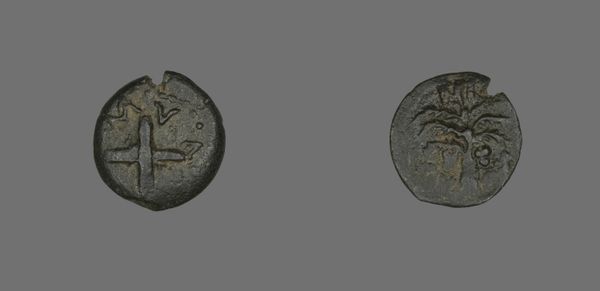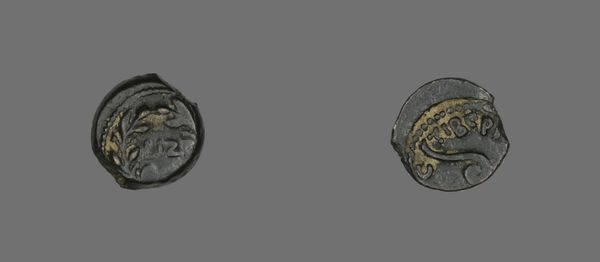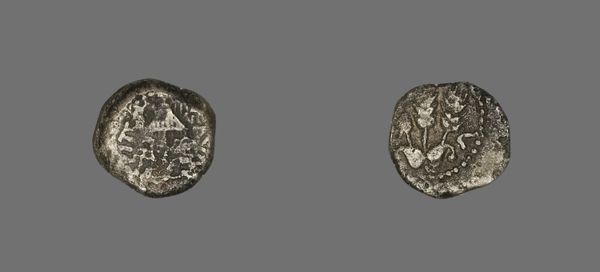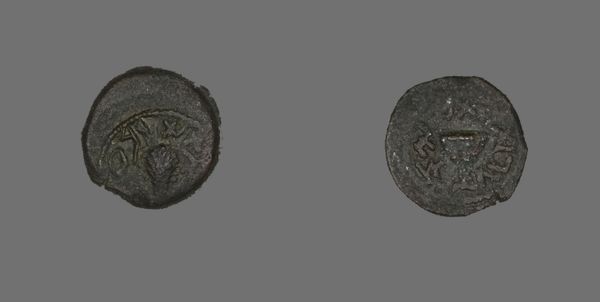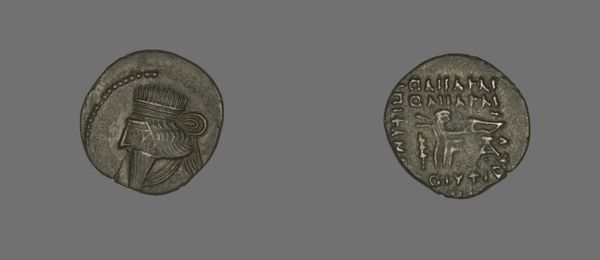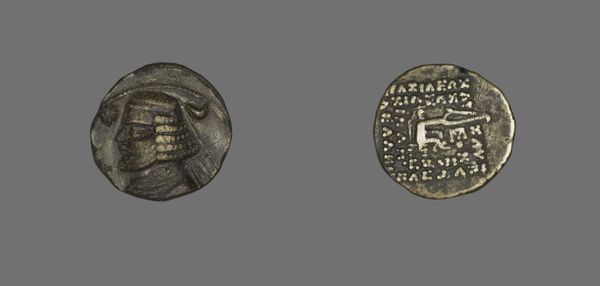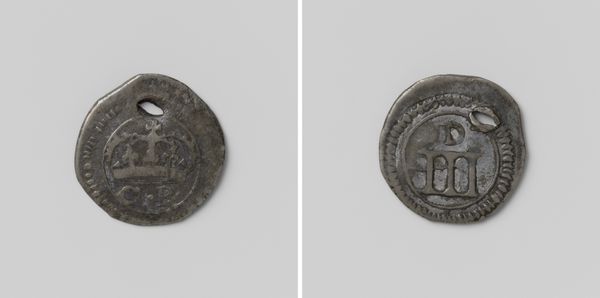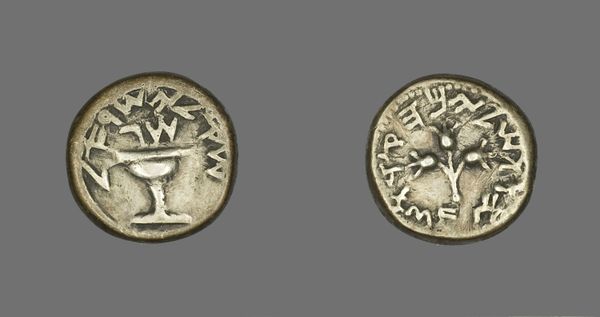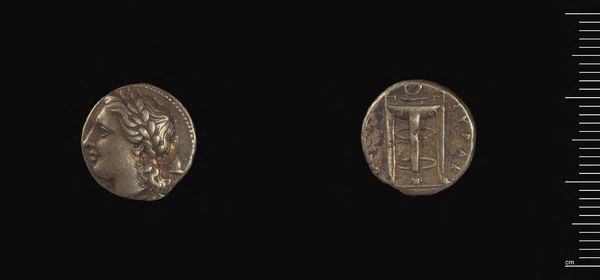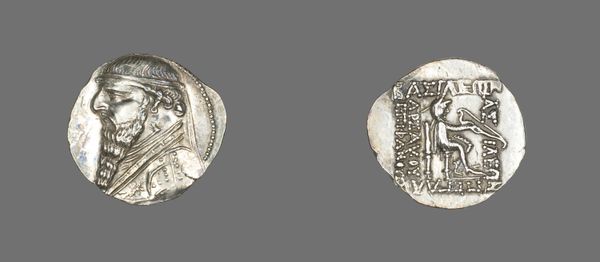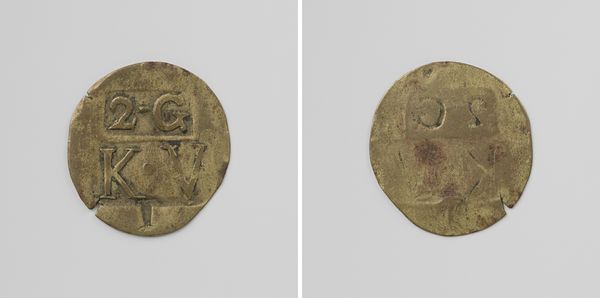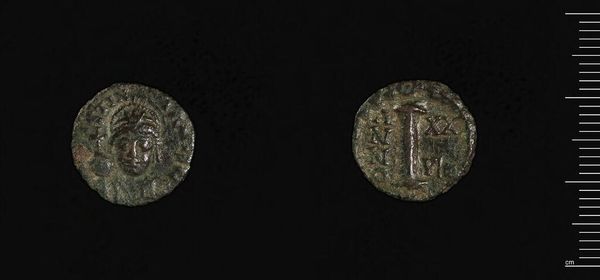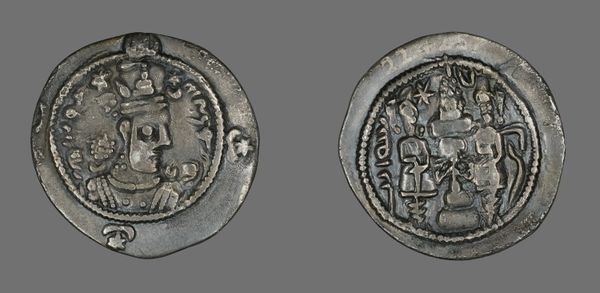
bronze, sculpture
#
portrait
#
sculpture
#
greek-and-roman-art
#
landscape
#
bronze
#
figuration
#
ancient-mediterranean
#
sculpture
#
coin
Dimensions: Diam. 1.7 cm; 2.94 g
Copyright: Public Domain
Curator: Here we have a Carthaginian coin, dating back to approximately the 3rd century. One side features a portrait, and the other, a horse standing beneath a palm tree. It's currently part of the Art Institute of Chicago's collection. Editor: The piece is small, obviously, and worn with time, but the way the images emerge from the metal gives it such a palpable presence. It speaks to the passage of capital, human and animal. Curator: It certainly does. As currency, this coin speaks volumes about the power structures within Carthaginian society, where the female figure, presumably a goddess or powerful queen, would signify a matriarchal lineage, or at least goddess-venerating culture while also the wealth that could afford horses and palm trees for trade. Editor: Precisely! Consider the material: Bronze was both a signifier of value and crucial in crafting tools and weaponry, illustrating the intersection of material value and state power. Who was smelting the metal, who profited from the exchange. These are questions linked to identity formation for a region that depended on global exchange for sustainability. Curator: The horse is particularly interesting in this context. Its depiction underscores its importance to Carthaginian military prowess and, consequently, their control over land and trade routes in North Africa and the Mediterranean. The palm tree then marks the tropical and sub-tropical dimensions of the colony and its connections. This would reflect a kind of pastoral, even aspirational version of daily life during these times. Editor: And think about the mold-making process – the labour involved in each impression and its relation to reproducibility. It wasn't mass-produced in our understanding of today's mass-production, each had unique qualities and its creation involved the kind of artistic sensibilities often considered unique. The images, though standardized, become miniature sculptures when taken into consideration for their relief, its three dimensionality when impressed and stamped on to the material, that would circulate into other systems of consumption. Curator: It becomes clear, observing objects like this, that intersectionality is never a new or abstract concept, that these visual strategies are how identity has always been imagined and reimagined over long stretches of time. Editor: I agree completely, and focusing on the coin’s making and function in daily life further collapses notions of fine art versus utilitarian objects and invites inquiry into global trade’s cultural implications that, unfortunately, persist today.
Comments
No comments
Be the first to comment and join the conversation on the ultimate creative platform.
